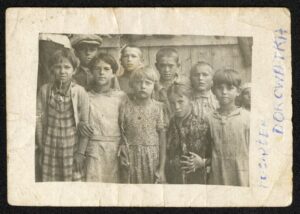If Children’s Day had been celebrated in 1945, a group of children who had just arrived in Białystok on 1 June 1945 from Karakulin, a village near the Urals, would have had a special reason to celebrate.
They were young residents of the city who had left their homes four years earlier, leaving for a summer holiday. No one would have thought that this “rest” would last so long…
Young people from Białystok left for a pioneer camp in Druskininkai at the beginning of June 1941. The group consisted of over 200 children, about half of whom were young Jews. The other inhabitants of the camp were Belarusians, Russians, a small group (over 20 children) of Poles, but also a few young Germans.
Less than three weeks later, German planes appeared overhead. After breakfast, the children were told to pack but to take mainly food. They boarded a train which headed towards Grodno.
When it turned out that the city was in flames, the train turned back. In total, after 12 days of traveling from station to station, the train reached the town of Sarapul in the Udmurt Republic in the Urals.
The children spent the first months there; then, in the fall, they were moved to Karakulin, where the school building was converted for the needs of these small Białystok residents. The children spent the next few years in Karakulin, constantly homesick and not knowing when – or if – they would see their loved ones again.
1.06.1945 – “Holidays” in Sybir…
Data publikacji:




